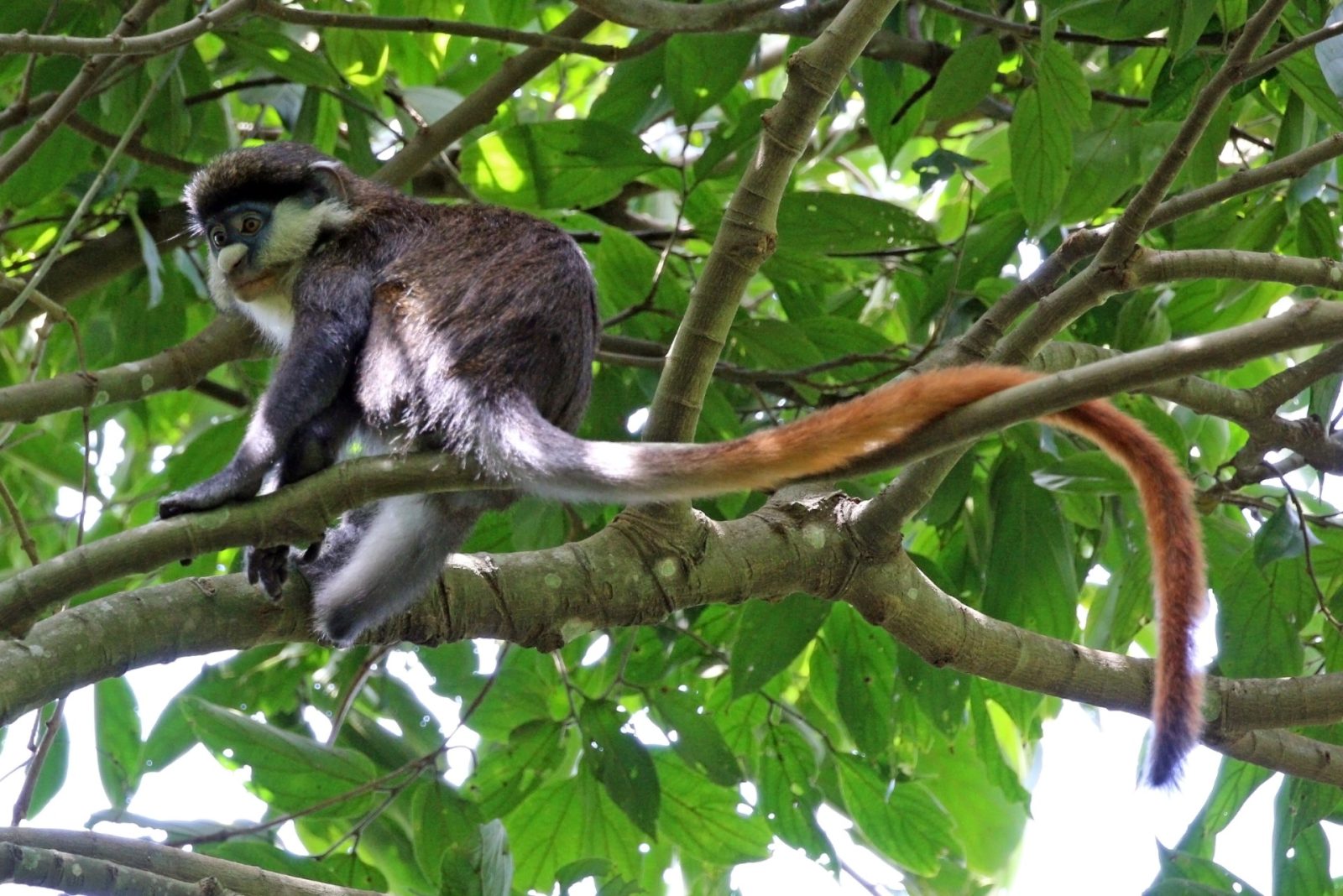
Red -tailed monkey
The red-tailed monkeys ( also known as black-cheeked white-nosed monkey, red-tailed guenon, redtail monkey, or Schmidt’s guenon).
It is found in Angola, Cameroon, Central African Republic, Democratic Republic of the Congo, Kenya, Rwanda, South Sudan, Tanzania, Uganda, Zambia, and possibly Burundi. The red-tailed monkey is usually black, red, or orange.
Although native to this region, it has spread ass well as it can survive in different habitats and under different conditions. It is a distinct creature in its habitats and is gradually becoming endangered due to deforestation and over-exploitation through hunting and predation. As we are the currently the only cause for their decline, it would in theory be very easy to end its problems. In practice, this is rather different. There are 5 recognized subspecies, not surprising, as it has such a large range. They are small, with body length falling between 30-60cm. The tail can grow to 90cm.
Red-tailed monkeys communicate using different methods which are characteristic of communicating specific behaviours or things. Physical and vocal communication are used between members of social groups of these monkeys to demonstrate social dominance, submissiveness, or greeting. Vocal communication is used between members of social groups of red-tailed monkeys in which the more submissive monkey will make a soft, oscillating call to its elder.
Red-tailed monkeys eat a large amount of fruit, but are considered omnivorous because they will eat leaves, flowers, or insects in times where fruit is less common. As they forage, these monkeys gather their findings in the expandable cheeks of their mouths. The pouches will hold a large amount of food. This allows them to grab much food, and then eat it away from others which might steal it. The red-tailed monkey predated by crowned eagles, wild cats, and occasionally, humans and chimpanzees.
They live in groups of 7-30 individuals, with mature males leaving (either living alone, or in bachelor groups, until strong enough to take over their own group).
Listed as least concern by IUCN and are found throughout the Congo and East central Africa.
